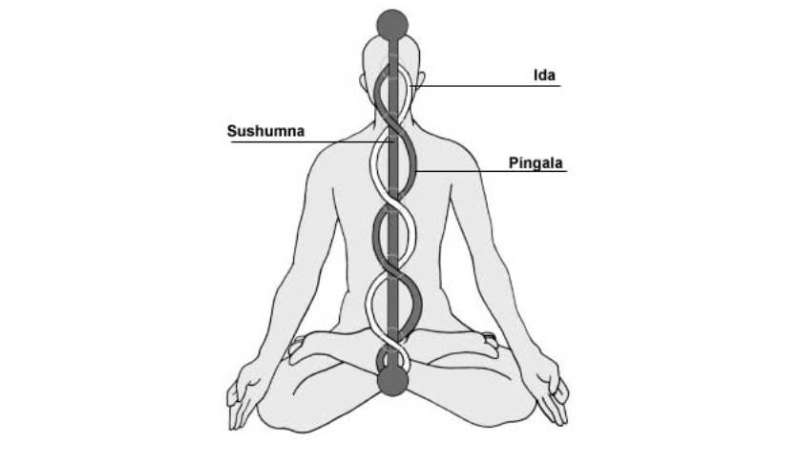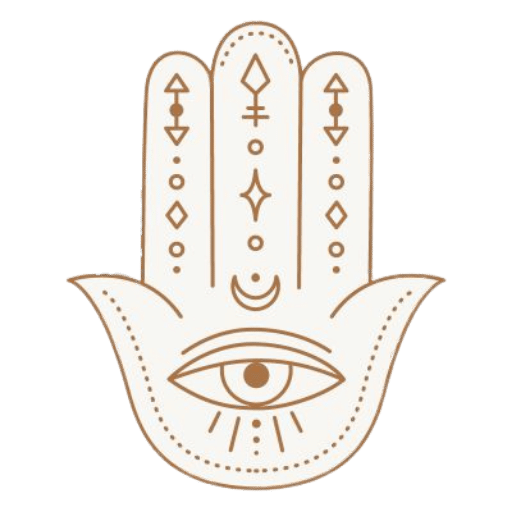
Nadi Shuddhi Kriya, a Kundalini pranayama practice from the Himalayan tradition
A breathing exercise to balance Ida & Pingala Nadi and open Shushumna channel
From the Rishikesh Himalayan tradition of Kriya Yoga, here’s Nadi Shuddhi Kriya, a Kundalini Pranayama practice I’ve learned from direct students of Swami Rama, Swami Veda Bharati, and Swami Satyananda.
Nadi Shuddi Kriya is a nadi cleansing and balancing practice that lasts between 35 to 45 minutes.
Shuddhi means indeed “purification” in Sanscrit, and through this traditional kriya we’ll be sure to purify Ida and Pingala nadi, a foremost prerequisite for the opening of the Shushumna channel and the awakening of Kundalini Shakti.
Check Also:
> Ajna Chakra Yoga Practice: A Kundalini Kriya For The 3rd Eye
> Yoga Nidra Script For Healing and Deep Relaxation

Ida and Pingala
In yogic anatomy, Ida and Pinala are two of the three main nadis, or energy channels, that run through the body. Ida Nadi is associated with the left side of the body and right hemisphere of the brain, Pinala Nadi is associated with the right side of the body and left hemisphere of the brain.
Ida and Pingala crisscross each other at each of the lower five chakras (root, sacral, navel, hearth, throat), forming the shape of a coil, similar to those of the DNA. They begin at each respective nostril and end at the base of the spine, at the coccyx, where the root chakra (Mooladhara) is located.
- Ida Nadi: Ida Nadi begins at the base of the spine and runs up through the body and the five lower chakras, ending at the left nostril, which scientific studies have proven is connected to the parasympathetic nervous system, responsible for rest and relaxation. Ida Nadi is associated with lunar energy or the body and mind’s feminine, cooling, and calming aspects. The left nostril is connected to the right hemisphere of the brain, responsible for creative and emotional thinking.
- Pingala Nadi: This energy channel starts at the right nostril, and is associated with solar energy, or the masculine, heating, and energizing aspects of the body and mind. It is connected to the sympathetic nervous system, responsible for the body’s fight or flight response, and to the left brain, the analytic and logical hemisphere.
How to perform Nadi Shuddhi Kriya
A Kundalini Pranayama
Step 1: Single Nostril Breathing [10/12 minutes]
- Sit in a comfortable crossed-leg position with spine straight and chin parallel to the floor. Take a few deep breaths from your nose and relax yourself.
- Gently close your right nostril any way you fancy, no need for mudra in this particular Nadi Shuddhi kriya, but if you wish you can use Vishnu Mudra (Nasika mudra) or Nasarga Mudra.
- Inhale and exhale from the left nostril for 10 rounds. A slow deep breath generating no sound.
- Close the left nostril and repeat the same 10 cycles from the right one.
- Now free both nostrils and inhale and exhale deeply and silently from both nostrils 5 times.
There’s no recommended ratio for this breathing exercise, but it’s always good practice to make the exhale longer or equal to the inhale.
Repeat this cycle for 10/12 minutes. You can use a timer or a stopwatch.
Just remember that you’ll NEED TO FINISH THE CYCLE YOU’RE ON EVEN IF THE TIME IS UP. Leaving a cycle incomplete will create an unbalance in the nadi, thus spoiling the whole point of this kundalini pranayama.
Alternatively, you can perform a set number of cycles, but for this you’ll need to measure your pooraka (inhalation) and rechaka (exhalation).
- If the total duration of your breath cycle (puraka+ rechaka) is over 25 seconds, then you can do one round only.
- if your breath cycle is at least 15 seconds then perform two rounds.
- if less than 15 seconds perform three or four rounds.
My personal recommendation would be to practice with a timer for the first time and see how many rounds you fit in 10/12 minutes. Then you can just repeat the same number of rounds the next time you’ll practice Nadi Shuddhi Kundalini Pranayama Kriya.
Step 2: Nadi Shodhana [10/12 minutes]
Nadi Shodhana, also known as “alternate nostril breathing,” is a yogic breathing practice that helps to balance the energy flow in the body and calm the mind. It’s one of the most popular pranayama techniques and also one of the safest. To perform Nadi Shodhana for this kriya:
Preparation
- Sit comfortably in a cross-legged position or in a chair with your spine straight and your hands on your knees.
- Close your eyes and take a few deep breaths to relax your body and calm your mind.
- Close your right nostril with your right thumb and exhale deeply, slowly, and silently through your left nostril – this first exhalation is not part of the first cycle.
Nadi Shodhana
- Keep your right nostril closed and inhale from the left nostril, deeply, slowly, and silently.
- At the top of your inhalation, close your left nostril using any finger of the right hand and hold your breath for an instant.
- Keep your left nostril closed and exhale slowly and steadily from the right nostril.
- Hold the breath out for an instant.
- Inhale deeply through your right nostril
- Hold your breath for a moment at the top of your inhalation.
- Exhale slowly and steadily through your left nostril.
- Repeat these steps for several rounds – inhale left nostril and exhale right, inhale right, exhale left. The holding of the breath (khumbaka) between inhale and exhale or exhale and inhale should only be practiced once you get confident with the alternating nostril breathing, women on their periods should not practice external breath retention (holding the breath out).
- End the practice by exhaling through your left nostril and then lowering your hand to your knee.
There’s no particular ratio recommended for Nadi Shodhana in this kundalini pranayama kriya. If you’re familiar with Nadi Shodhana use any ratio you’re comfortable with. If you don’t know what I’m talking about just make your inhalations and exhalations slow and silent, possibly keeping them of the same duration, or making the exhale longer than the inhale. I’ll soon write a post about “what is ratio in Pranayama” to explain this more advanced technique.
Step 3: Om Mantra [10/12 minutes]
You can practice this step seated or standing (If your lower limbs feel numb after the previous exercises).
Follow the indications provided for steps 1 and 2 regarding the length and intensity of the breath and the way to close the nostrils.
- Inhale from the left nostril
- exhale from the right nostril
- inhale from the right nostril
- exhale with a long “OM” (AUM) or with a long ujjayi breath from the nose or mouth.
- inhale right nostril
- exhale left nostril
- Inhale left nostril
- exhale with a long “OM” (AUM) or with long ujjayi breath from the nose or mouth.
This is one round. Repeat for 10 to 12 minutes or an equal number of rounds (follow the advice from step 1 for measuring the duration).
Step 4: Savasana
Lay in your favorite version of savasana for today. Empty your mind and relax for a minimum of 8 minutes.
If you find your mind wandering, you can focus on the left and right sides of your body by practicing a mental Nadi Shodhana (anuloma viloma), or use the rotation of consciousness techniques from yoga nidra.
Frequency of practice
This is one of the most powerful Kriyas for beginners, it has astounding effects if practiced every day as a yogi’s regular pranayama practice.
Although it can be practiced at any time, it’s a great kriya to do in the morning before sunrise, it’s better practiced before asana and after joint movements (such as Pawanmuktasana series 1).
Contraindications
This kundalini pranayama kriya has no contraindications and can be practiced by anyone.



